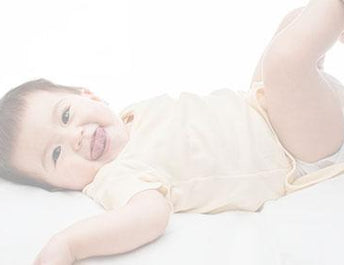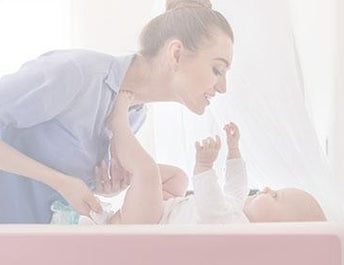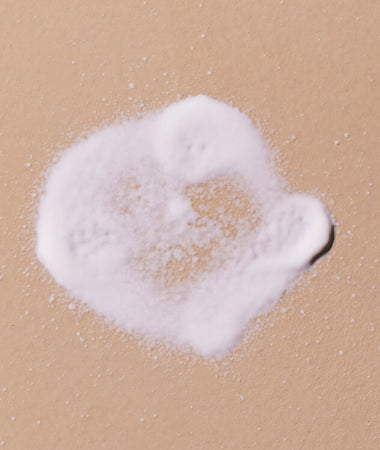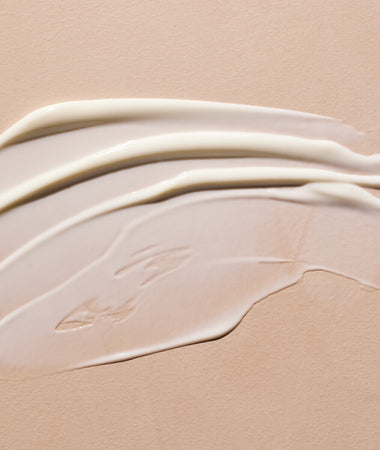
10 Tips For Changing Diapers The Natural Way
Changing diapers isn’t the most glamorous part of parenthood, but it’s part of keeping your little one happy and healthy! As you think about the best ways to keep your baby’s bottom clean, consider using cloth diapers instead of disposables for a more natural diapering routine.
In this article, we’ll give you 10 tips for diapering your baby the natural way so you can make their diaper change times a breeze. But first, we’ll discuss why cloth diapers are better for the environment and your baby.
Why Cloth Diapers Are Better For The Environment

From their creation to their removal, disposable diapers affect our environment in a few different ways. First of all, they sit in our landfills and take a very long time to decompose.
Every day, Americans throw away close to 49 million disposable diapers. Those disposable diapers make up two percent of all the garbage generated in the United States and are one of the largest contributors to landfills.
What’s the other thing that ends up in the landfill along with disposable diapers? Poop. When dirty disposable diapers are wrapped up and thrown in the trash, fecal matter ends up in the landfill rather than in the sewer system where it can be properly treated.
But that’s not all. The disposable diaper has already affected the environment before it even makes it to the landfill. The process of manufacturing so many disposable diapers consumes a significant amount of fuel, non-renewable resources, and natural resources.
Cloth diapers, on the other hand, are reusable, so they don’t expand our landfills. They’re also made from all-natural materials (cloth), so you don’t have to worry about what’s touching your baby’s sensitive skin. That brings us to the next important topic: why cloth diapers are better for your baby.
Why Cloth Diapers Are Better For Your Baby

Soft, natural fabrics (like those found in cloth diapers) are the best choice for your little bundle of joy (especially their diaper area) because they are free of harmful chemicals. Disposable diapers often contain chlorine, latex, perfumes, and dyes. The chlorine can cause skin irritation and rashes, while the latex, perfumes, and dyes can cause allergic reactions on your baby’s sensitive skin.
Cloth diapers also allow for better airflow, which can keep your baby cool and reduce the risk of diaper rash. And then there’s the cost. Disposable diapers can cost over $1000 per child per year. Reusable cloth diapers cost half that (or even less).
Plus, you can even put your little one in cloth diapers for a fun day at the pool. There are cloth swim diapers specially created to keep the poop in but not retain water like a regular diaper.
Similar to your own swimsuit, these cloth swim diapers can be washed, dried, and used for another day in the water. Check your diaper packaging for specific washing and drying instructions.
Now that we’ve talked about why cloth diapers are better for your baby and for the environment, we’ll let you in on 10 tips for changing diapers the natural way.
10 Tips For Changing Diapers The Natural Way
1) Choose The Cloth Diapers That Are Right For You
First of all, there is no right or wrong time to begin using cloth diapers! Some parents start the day they bring baby home from the hospital, while others prefer to get through the first few weeks using disposable diapers and then give cloth diapering a try.
Whenever you decide to take the plunge, first figure out which type of cloth diapers is most convenient for you and your family. Keep your baby’s caregivers in mind as well — the cloth diaper you like best might not work for grandpa or the babysitter. Be open to more than one option!
Cloth diapers now come in a variety of shapes and sizes. The most common types are:
- Flats—Cloth rectangles that can be folded in a number of different ways
- Prefolds—Cloth rectangles that are thicker in the center
- Fitted—Cloth material with built-in closures
- Contour—Like the flats but tapered to fit around your baby’s legs
- Pockets—An outer waterproof shell with a pocket for the cloth diaper
- All-in-ones—Similar to disposable except they can be washed and reused
- All-in-twos—Similar to pockets
And, if you choose any of the first four, you’ll also want to purchase a diaper cover. This is just a waterproof layer with built-in closures (snaps or velcro) that helps keep the mess in and your baby’s clothing dry.
Finally, if your cloth diapers don’t have built-in snaps, you’ll need to use fasteners to keep the diaper secure and snug around your baby.
Flats and a diaper cover is the simplest way to use cloth diapers, but give each option a try to see what works best for you.
2) Wash Your Hands First

When you notice that it’s time to change your baby, put them in their crib (if you’re by yourself), and then wash your hands. This helps remove dirt and bacteria from your hands and is an important step in keeping your baby healthy.
If you don’t have soap and water available or you just forget, grab a diaper wipe, like Mustela’s Certified Organic Water Wipes with Cotton and Aloe. These moisturizing wipes are fragrance-free, alcohol-free, and ever so gentle on your baby’s delicate bottom. Plus, they nourish and protect skin.
Give your hands a quick cleaning with a wipe and then keep the pack closeby to use during the diaper change.
3) Assemble Your Supplies
Once you start changing your baby, you won’t be able to go off in search of a clean diaper or another container of wipes. That’s why it’s vital to assemble all your supplies before bringing your baby to the changing area. Everything should be within arms-reach and ready to go.
At the very least, you’ll need wipes, a diaper cover, and a cloth diaper. As we mentioned in tip #1, you can purchase an all-in-one cloth diaper, but we suggest purchasing the diaper cover and cloth flat separately. That way, you can reuse the cover multiple times before washing it (unless it gets dirty, of course).
In order to have all your supplies on hand when you’re out and about, make sure your diaper bag is well-stocked and refilled often. In addition to the diaper-changing basics, pack your diaper bag with a wet bag (more on that later) and Cicastela Moisture Recovery Cream.
Cicastela Moisture Recovery Cream is great to have when you’re on-the-go because it’s so versatile — you can use it to calm redness in the diaper area, but you can also apply it to scratches, scrapes, and traces of chicken pox.
This gentle cream repairs irritated skin, soothes discomfort, and protects the skin barrier. You and your little one will be on to the next adventure in no time!
4) Use A Washable Changing Pad

Whether you’re in the nursery on a changing station or on the floor in the living room, it’s essential that you put down a washable changing pad first. They keep your baby comfortable, but they also make clean-up easy when accidents occur during the diaper change.
Some pads are made of thick foam, while others are thin and fold easily. Choose the pad that is right for you and your baby.
5) Prepare The Cloth Diapers Ahead Of Time

It’s always good to be prepared for every eventuality, so we recommend having your cloth diapers ready to go before changing time. Most of the cloth diaper options available require that you fold them in one way or another. You don’t want to try to fold a cloth diaper while keeping your baby in one place. Instead, pre-fold a stack of cloth diapers while your baby is playing or sleeping.
Additionally, even if it’s your habit to reuse the diaper cover, we suggest having a clean one nearby with a cloth diaper inserted and ready to go. That way, if the dirty diaper has leaked, you don’t have to clean the cover as well as your baby’s bottom. Just pull out the cover—cloth diaper and all—and replace it with a clean one.
If you’re using the pocket or all-in-one variety, put the cloth diaper in the cover before starting to change your baby. Trying to insert a cloth diaper into a pocket with one hand can be challenging, to say the least. Get everything ready first, and then bring your baby to the changing area.
6) Change The Diaper Just Like A Disposable
For a step-by-step guide to changing your baby’s dirty diaper, check out our article The Best Way To Change A Diaper. The same steps apply whether you’re using cloth diapers or disposable diapers. The only major difference is that you won’t dispose of the cloth diaper in the garbage or in a diaper genie.
Here are some key tips that you should always apply when changing your little one’s diaper:
- Keep one hand on your baby at all times.
- Use a diaper wipe, like Mustela’s Cleansing Wipes Delicately Fragranced, to clean your baby’s diaper area from front to back.
- If your little one is extra messy and a diaper wipe simply doesn’t do the trick, put your baby in the bath. When you bathe your little one, stick with Mustela’s Gentle Cleansing Gel to safely and effectively clean while keeping their delicate skin’s natural oils intact.
- If your baby develops diaper rash (relax, it’s completely natural), apply a cream or balm, like Mustela’s Diaper Rash Cream 1-2-3. Also, let your baby go without a diaper for a little while each day and make sure their bottom is completely dry before re-diapering them.
- Always keep Mustela's No Rinse Cleansing Water on hand for quick clean-ups.
It’s also a good idea to apply a bit of liniment to your baby’s diaper area after each change to help clean their skin. Mustela’s Liniment is fragrance-free and contains 99% natural ingredients. This cleansing lotion moisturizes and protects your baby’s bum, leaving their skin feeling soft and smooth!
7) Dispose Of Soiled Wipes In The Garbage
With disposable diapers, you may have been in the habit of wrapping the wipes in the dirty diaper before disposing of everything in the garbage. With cloth diapers, you have to dispose of the soiled wipes separately.
To make this easy, have a garbage can with a sealable lid nearby. To cut down on the smell, you can also put dirty wipes in a Ziploc bag.
8) Deposit Soiled Diapers Into A Diaper Pail
After the diaper change, you’ve got a wet and dirty cloth diaper on your hands. Now what? Store all dirty cloth diapers in a diaper pail with a lid until it’s time to do the laundry.
As a general rule, you can usually deposit newborn diapers directly into your diaper pail. But for older babies who have started on solid food, you may need to transfer some of the mess to the toilet before stowing the diaper in the pail.
Give the used diaper a good spray, dump, or dunk in the toilet before putting it in the pail. This can also help reduce the not-so-pleasant smell coming from your diaper pail.
9) Wash Your Cloth Diapers
Speaking of laundry, it’s something you’ll be doing a lot of when it comes to cloth diapers! Washing dirty diapers might seem intimidating, but if you can wash a regular load of laundry, you can do this, too.
First of all, plan to wash your diapers every couple of days. You may even choose to do a load every day if you have the time and want to stay on top of them. The more often the better when it comes to doing away with the diaper-pail stench.

Put the diapers in the washing machine and run a cold water rinse cycle without laundry detergent. When it finishes, simply leave the diapers in the washer, add detergent, and start a hot water wash cycle.
Fabric softener might seem like a good idea to make your diaper smell fresh and clean, but it’s best to skip it. Most fabric softeners contain chemicals — not exactly what you want if you’ve chosen cloth diapers in order to be more natural.
Plus, fabric softener can build up on diapers and cause them to lose their absorbency. Bad news when it comes to keeping your baby clean.
To get your cloth diapers dry and ready to go back on your little one, hang them in the warm sun or put them in the dryer on low heat. Check your diaper packaging for specific drying instructions.
10) Carry A Wet Bag For On-The-Go Changes

Using cloth diapers requires a little extra preparation when you leave the house. In addition to carrying a few cloth diapers in your diaper bag, you’ll need to pack a wet bag.
A wet bag is a washable, reusable, waterproof, and leak-resistant bag that you can use to store any number of items. In this case, you’ll use it to store and transport dirty cloth diapers that you change while on the go.
The nice thing about wet bags is that they keep the odors and liquids inside better than bags made from other materials. When you get home, you have two options:
- Put the wet bag, diaper and all, in your diaper pail.
- If you’re ready to do a load of laundry, remove the diaper from the bag and then toss in the bag itself.
Many parents even line their diaper pails at home with wet bags to make the cleaning process super simple.

Cloth diapers have come a long way from the leaky, saggy squares of fabric that your parents—or your parent’s parents—used. Now they’re better for your baby, more convenient for you, and better for the environment. That’s a win for everyone.
So don’t hesitate to go the cloth diaper route. Pick up some cloth diapers and diaper covers, Mustela's Cleansing Wipes with Avocado, and our Diaper Rash Cream 1 2 3 to keep your little one’s bottom soft, clean, and naturally healthy!
- reg.
- $14.00
- Sale price
-
$14.00
- reg.
-
reg.
- Unit price
- /per
Suggested Articles

Diaper Changing: Cleaning Your Baby's Bottom

What's in My Diaper Bag?

How to Change a Diaper: A Step-By Step Guide
Get tips, news
and exclusive offers




